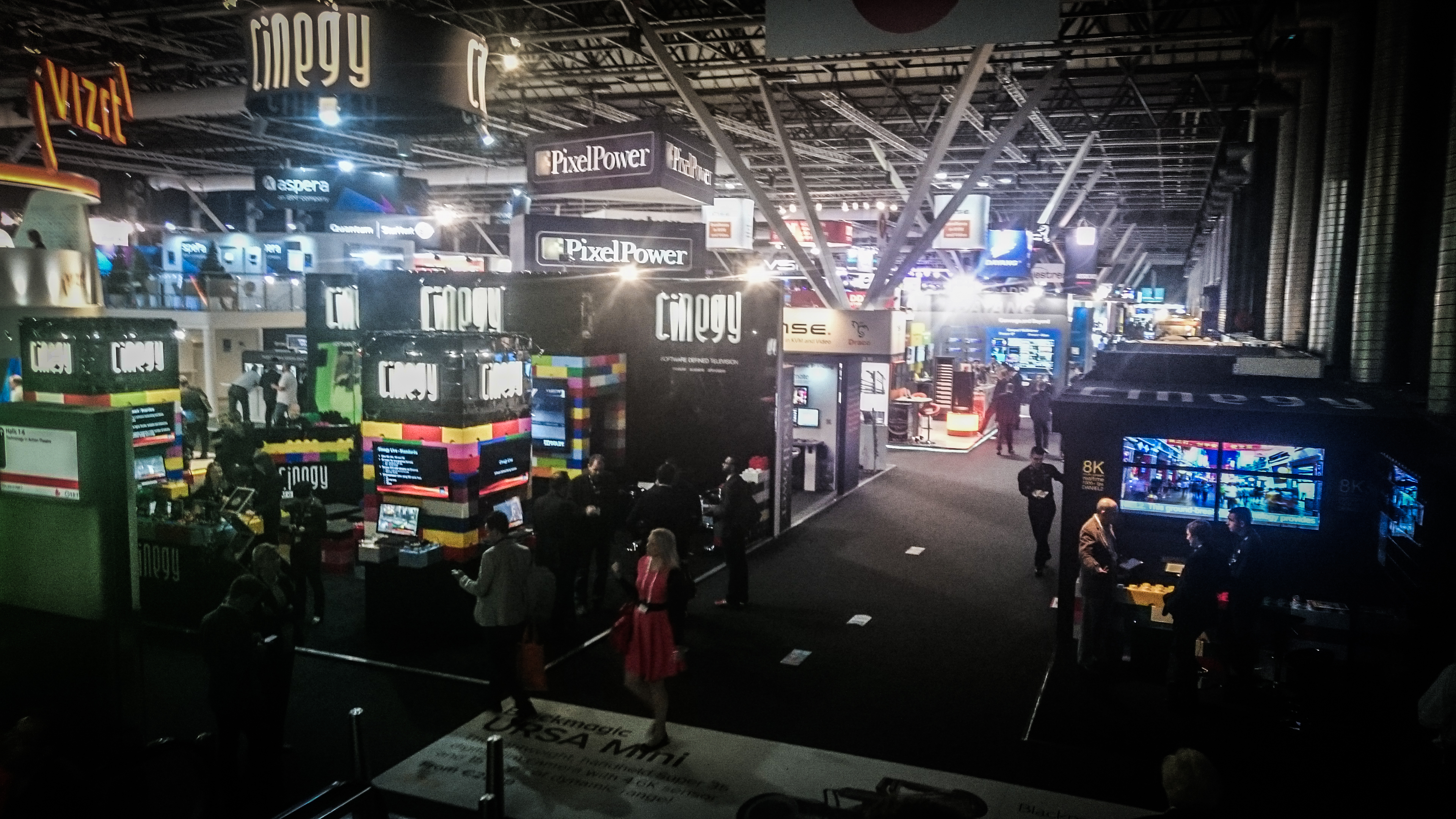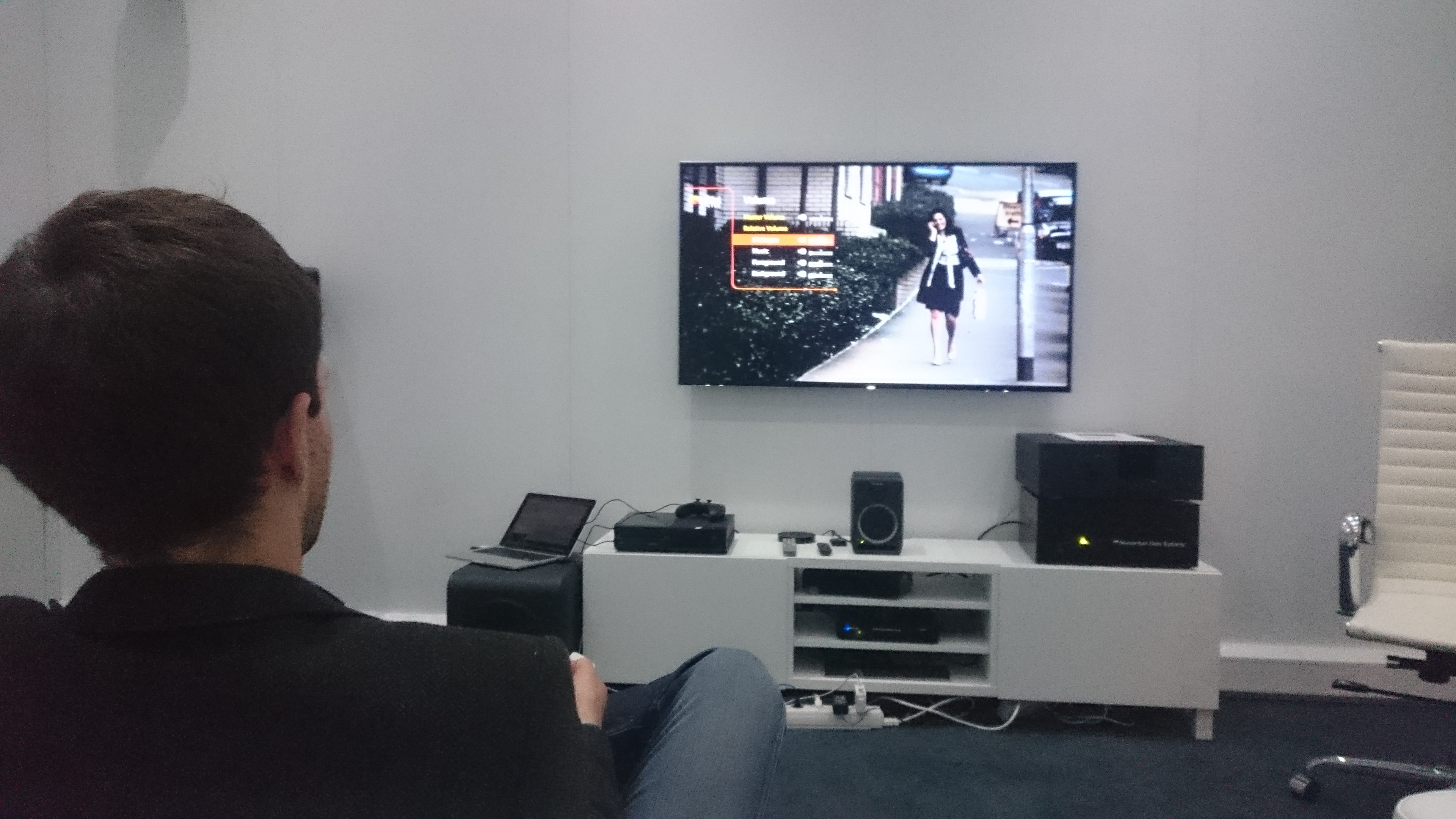IBC 2015 Demonstration of Object Based Clean Audio
 The problems of hearing impaired people watching TV have been well documented of late. Loud music, background noise and other factors can ruin the enjoyment of TV for many people with hearing loss – around 10 million people in the UK according to Action on Hearing Loss.
The problems of hearing impaired people watching TV have been well documented of late. Loud music, background noise and other factors can ruin the enjoyment of TV for many people with hearing loss – around 10 million people in the UK according to Action on Hearing Loss.
In previous research funded by the ITC and Ofcom I looked at solutions that took advantage of the (then) recent introduction of 5.1 surround sound broadcast. Some of this ended up in broadcast standards and is being used by broadcasters. Now emerging new audio standards are opening the door to improving TV sound much more for hearing impaired people, and also for many others.
I’ve written about some of this work before, a recent blog post described our journal article in the Journal of the Audio Engineering Society where my colleague Rob Oldfield and I picked up where my PhD left off and looked at how we could improve TV sound for hearing impaired people by using features of emerging object-based audio formats. In object-based audio all component parts of a sound scene are broadcast separate and are combined at the set top box based on metadata contained in the broadcast transmission. This means that speech, and other elements important to understanding narrative, can be treated differently compared to background sound (such as music, noise etc).
I’ve just returned from IBC in Amsterdam where we’ve been demonstrating some University of Salford research outputs on object-based clean audio with DTS, a key player in object-based audio developments.
Object-based Clean Audio at IBC 2015
Last week we spent a week showing the results of our recent collaboration with DTS – presenting personalised TV audio and giving viewers complete control of how loud different object-stream categories were in their loudspeakers. Sound designer Ash Tidball provided audio stems mixed so that separate control over different types of object streams was possible. Short films for testing were provided by directors Dan Price and Will Herbert. DTS encoded the film soundtracks as MDA object-based audio streams and also provided a customised version of their DTS:X player designed specifically for our listening tests with an on-screen menu allowing viewer-control over speech, music, background sound and foreground sound effects.
Since then one of our talented MSc Audio Production students, Melissa Meadows, has spent her summer running listening tests with hearing impaired people using a DTS:X player-based test system as part of her masters project. This already gives us some early insight into how people were using the DTS:X personalised audio mix and no doubt more will become clear as we work through a data analysis over the coming weeks.
This implementation of personalised audio for hearing impaired people was demonstrated from 11th – 15th September at IBC 2015, Amsterdam in DTS’s demonstration room in Hall 2 and generated a lot of interest from people in the broadcast industry curious as to how their audience may react to having such control. Early results from our listening tests indicate that the hearing impaired people who took part loved the control that DTS’s DTS:X player gave them. The most common question from participants was, “when can I get this at home?“. One participant said that it was the first time she had been able to understand what was happening in a film on TV for years. Clearly object-based audio personalisation has much to offer for people with hearing impairments!
Interestingly the small number of non-hearing impaired people who took part also made full use of the personalisation allowed by the player indicating that personalised object-based audio may have greater application than just for accessibility.
We will be publishing full results of our research in the coming months but would be interested to hear what features you would like if you could have more control over your film audio. More or less music? Louder dialogue? More or less sound effects? Comment is free 🙂
We would also love to hear from people with hearing impairments who would like to take part in future tests and get a taste of what may be on the way to their TV at home.
Acknowledgements:
This work would not have been able to take place without considerable assistance from the following:
- DTS inc
- Minnetonka Audio
- The S3A Project
- Sound designer Ash Tidball and directors Dan Price and Will Herbert for providing such great film content for tests.
- Melissa Meadows, MSc Audio Production, University of Salford
Many thanks to our friends at DTS for joining us in such a great collaboration.



